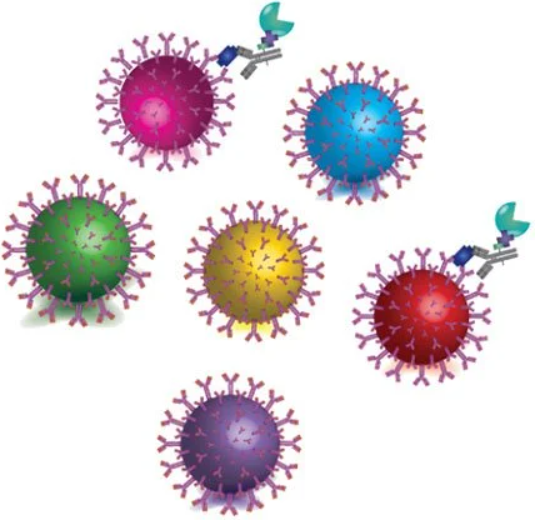微流控单分子检测Simoa 技术
The main difference between Simoa and conventional immunoassays lies in the ability to trap single molecules in femtoliter-sized wells, allowing for a “digital” readout of each individual bead to determine if it is bound to the target analyte or not. The digital nature of the technique allows an average of 1000 times sensitivity increase over conventional assays with CVs less than 10 percent.
Step1: Paramagnetic particles coupled with antibodies designed to bind to specific targets are added to the sample.在样品中添加结合特殊目标的携带抗体的顺磁磁珠。

Step2: Detection antibodies - capable of generating fluorescent product - are added.添加能够产生荧光产物的检测抗体。

Step3: 3. The objective is to form an immunocomplex consisting of the bead, bound protein, and detection antibody.目的是形成由头、结合蛋白和检测抗体组成的免疫复合物。

Step4: At low concentrations, each bead will contain one bound protein, or nore. 浓度较低情况下,每一个复合体将俘获一个或者零个抗体蛋白

Step5:The sample is loaded into arrays, in the Simoa disc, consisting of more than 200,000 microwells – each large enough to hold one bead. 把这种具有20万个微井阵列的样品放置在一个圆盘上。每个微井的尺寸刚好足够放置一个磁珠。

Step6:Enzymatic signal amplification with fluorescent substrate, fluorescence imaging and data reduction.

Step7: Data analysis – results can be viewed and analyzed on the board or exported to commonly used software packages or LIMS systems.
